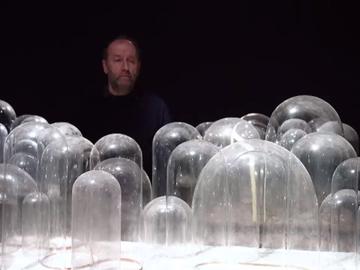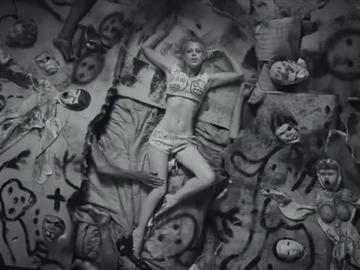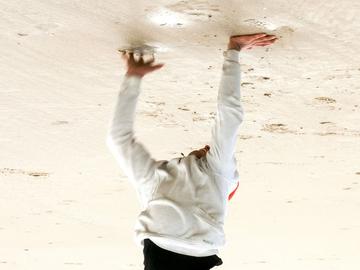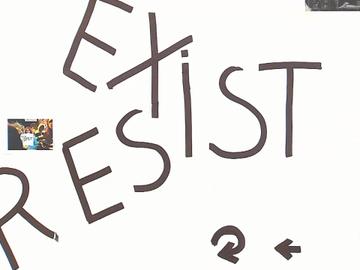At a time when the art world is questioning its environmental impact, the Centrale for Contemporary Art presents the highly relevant L’art de rien, a group exhibition centred around small gestures and humble materials.
Léa Mayer
Also read: Els Dietvorst wint Belgian Art Prize
It takes courage these days for an artist to forego one-upmanship. In this era of frenzied circulation of images, it is often the extravagant works that win out, those that create a spectacle. Fortunately, some artists are leading the resistance by cultivating an Arte Povera approach with a contemporary flavour. Their processes produce undeniable poetry coupled with a humility that is like a breath of fresh air in a consumerist context. At the invitation of the Centrale for Contemporary Art, the curator François de Coninck has selected works by about 50 visual artists, mostly based in Brussels, whose subtle approach consists of conveying things without demanding attention. We spoke to three of them.
Léa Mayer
Is it because she had a nomadic childhood and adolescence that Léa Mayer (1987) treads lightly through life and is reluctant to shackle herself with material constraints? What is certain is that, when she was 18, this French woman who lives in Brussels was profoundly affected by her guided experience in La Mansana de Chinati in Marfa, Texas, an essential pilgrimage for all self-respecting lovers of Donald Judd. Now in her thirties, the artist with a master’s in drawing from La Cambre, who moved to Brussels in 2007, has retained a certain taste for simplicity, seen in its concentrated form in Judd’s famous Chair 84.
“Ever since I was a child, I have been fascinated by the idea of the link that can exist between words and images,” she explains, offering a glimpse of a conceptual practice that rejects hermeticism. This young woman with translucent eyes who, for now, occupies a bright studio in the Maison d’Art Actuel des Chartreux (MAAC), is currently in the spotlight with three different shows: an exhibition relating to her six-month residency, a group exhibition at the Centrale for Contemporary Art, and another at S.M.A.K. in Ghent from now until December. In addition to her own work, Mayer teaches drawing at Saint-Luc and Arts2 in Mons as well as teaching courses at La Cambre. “I have this dual status: artist and teacher, which allows me to pass things on, be part of a dialogue, and not to have to constantly produce,” explains the artist, whose polymorphous and frequently collaborative work alternates between drawing and sculpture.
Among other works, the curator François de Coninck has chosen to exhibit Quatre cale-portes et trois sculptures (“Four Doorstops and Three Sculptures”) at La Centrale. It is left to the viewer, in a humorous touch that is evocative of both Marcel Duchamp and his ready-mades and of Robert Filliou, to sort these seven lined-up objects into one category or another. Yet more fragile are the three-dimensional bouquets of flowers, inspired by a child’s spontaneous offering, which the artist makes very slowly – three per year – out of paint (gouache, watercolour, and oil) and paper. These ersatz three-dimensional pieces, which also wilt, are an incisive exploration of the question of illusion and the vanity of representation.
Élodie Antoine
An unfolded ironing board, pieces of fabric, a tapestry covered in growths, tools hanging on the walls… Élodie Antoine’s studio resembles the lair of a seamstress who is prepared to go to great lengths – saws, scissors, screwdrivers – to deal with stubborn fabrics. Located on the fifth floor of the last of the Rempart des Moines blocks that contained social housing, the space features humorous and poetic works centred around everyday objects. For this sculptor (born in 1978), who trained at La Cambre and does not hide her love of textile art, economy of means is a second nature.
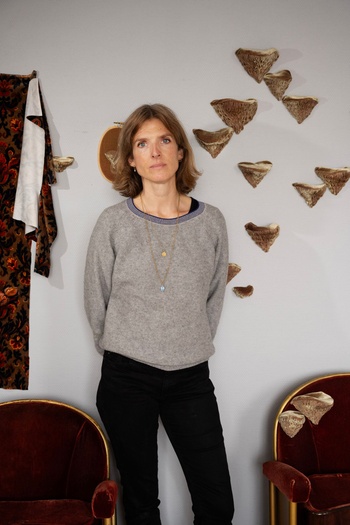
© Ivan Put
| Élodie Antoine
“As an artist, material constraints are a big concern,” she explains. “I think the reason I started out making little transportable sculptures was because I didn’t have a car and my studios were tiny.” A veteran of recycling, inspired by Le déjeuner en fourrure by the Swiss artist Meret Oppenheim and sculptures by Dorothea Tanning, Élodie Antoine likes to play with the familiar, a world that can be understood by anyone. “You think you know it, so you are no longer afraid of it; that’s what interests me,” she explains. When you look at it up-close, however, an uneasiness, an unsettling strangeness becomes apparent.
The best example of that interplay of attraction and repulsion is Lipstick (2016), a tube of lipstick crossed with a concrete drill. Long before Clara Luciani, the subtext of the piece appears to be “sous mon sein la grenade” (“under my breast, the grenade”). The simplicity of the metaphor conceals the intense manual labour involved. “That comes from my childhood: my parents made a lot of things themselves. There was a workshop in the basement with soldering irons, pliers, and above all a sewing machine to make clothes,” the artist recalls. To make the piece, Élodie Antoine used a silicone mould and real lipstick melted down and then remoulded. The same spirit underlies Fauteuil fongique, a green velvet seat onto which textile mushrooms have been sewn, and her Zip Thorax, an arrangement of zippers resembling a rib cage.
Damien De Lepeleire
Accessing Damien De Lepeleire’s studio is like crossing an assault course. It helps to be under 1.50m tall when entering the slippery back court that houses the space where he creates. Inside, the powerful odour of humidity and the accumulation of papers of all kinds, which call to mind Diogenes syndrome, paint a picture of an artist (born in 1965) who has little time for creature comforts. A good sign: comfort can be a formidable obstacle between man and creation.
This self-taught artist’s entire career reflects a distrust of the conditional nature of generosity in the art world. Winner of the Prijs Jonge Belgische Schilderkunst/Prix de la Jeune Peinture Belge in 1986, De Lepeleire could have allowed himself to be locked in a pictorial gilded cage, reproducing ad nauseam what gallery owners expected of him. Instead, he made the choice to experiment with formal cycles, each one new. In his 40-year career, he has undertaken fifty series. Was it commercial suicide? Without a doubt. But on the other hand, that commitment to the absence of an identifiable style opened up unexpected horizons to him. He explains: “As a result of that choice, which talented artists such as Mike Kelley and Alighiero Boetti give me confidence in, I found myself unable to paint any more because of the increased price of the material required. So, I have to find other ways to create with limited resources.”
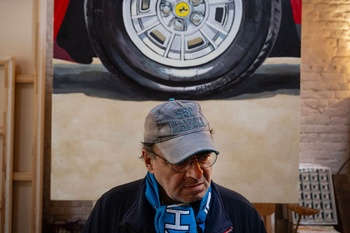
© Ivan Put
| Damien De Lepeleire
It is the body of such works, including his bronze casts of crushed cans entitled Last Pogo, that the curator of the Centrale for Contemporary Art has chosen to exhibit as part of L’art de rien. The works are built on the legacy left by a collector: 30 years of catalogues published by prestigious auction houses. Thanks to this rare windfall, the artist was able to cut out and even scrunch up images to make sculptures out of them by putting them back together, or canvases by attaching cardboard to the back to suggest a frame. In doing so, he restores a little of the lost physicality of the original pieces. “Rather than using colours out of a tube, I use existing reproductions of artworks. In the space of a second, the illusion takes shape, leading you to question what you are looking at,” says De Lepeleire.
L’art de rien
23/11 > 17/3, Centrale for Contemporary Art, centrale.brussels
Read more about: Expo , L'art de rien , CENTRALE for contemporary art , Léa Mayer , Elodie Antoine , Damien De Lepeleire
